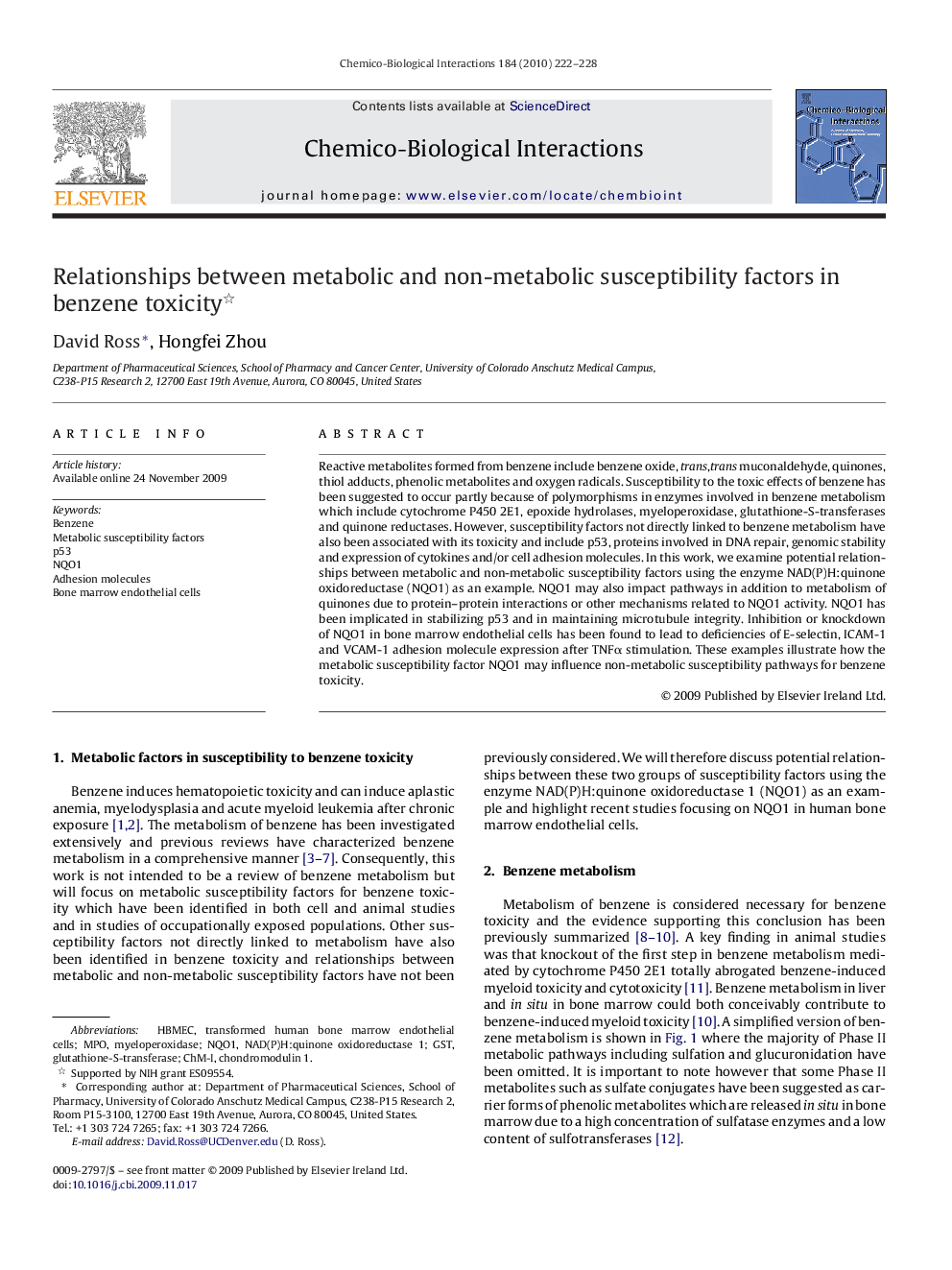| Article ID | Journal | Published Year | Pages | File Type |
|---|---|---|---|---|
| 2581153 | Chemico-Biological Interactions | 2010 | 7 Pages |
Reactive metabolites formed from benzene include benzene oxide, trans,trans muconaldehyde, quinones, thiol adducts, phenolic metabolites and oxygen radicals. Susceptibility to the toxic effects of benzene has been suggested to occur partly because of polymorphisms in enzymes involved in benzene metabolism which include cytochrome P450 2E1, epoxide hydrolases, myeloperoxidase, glutathione-S-transferases and quinone reductases. However, susceptibility factors not directly linked to benzene metabolism have also been associated with its toxicity and include p53, proteins involved in DNA repair, genomic stability and expression of cytokines and/or cell adhesion molecules. In this work, we examine potential relationships between metabolic and non-metabolic susceptibility factors using the enzyme NAD(P)H:quinone oxidoreductase (NQO1) as an example. NQO1 may also impact pathways in addition to metabolism of quinones due to protein–protein interactions or other mechanisms related to NQO1 activity. NQO1 has been implicated in stabilizing p53 and in maintaining microtubule integrity. Inhibition or knockdown of NQO1 in bone marrow endothelial cells has been found to lead to deficiencies of E-selectin, ICAM-1 and VCAM-1 adhesion molecule expression after TNFα stimulation. These examples illustrate how the metabolic susceptibility factor NQO1 may influence non-metabolic susceptibility pathways for benzene toxicity.
